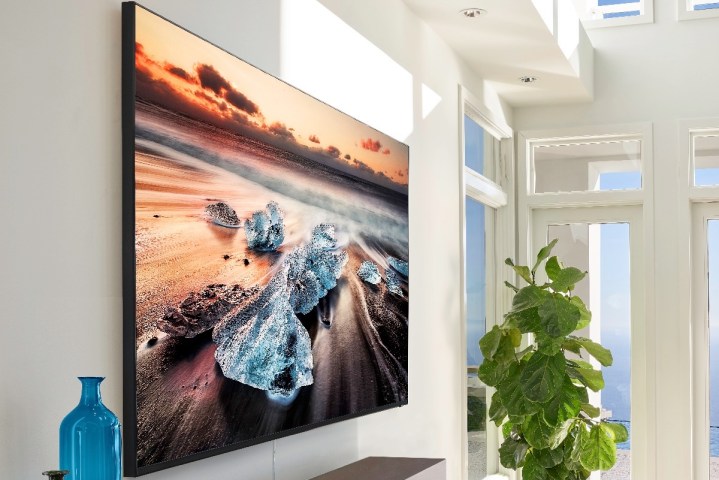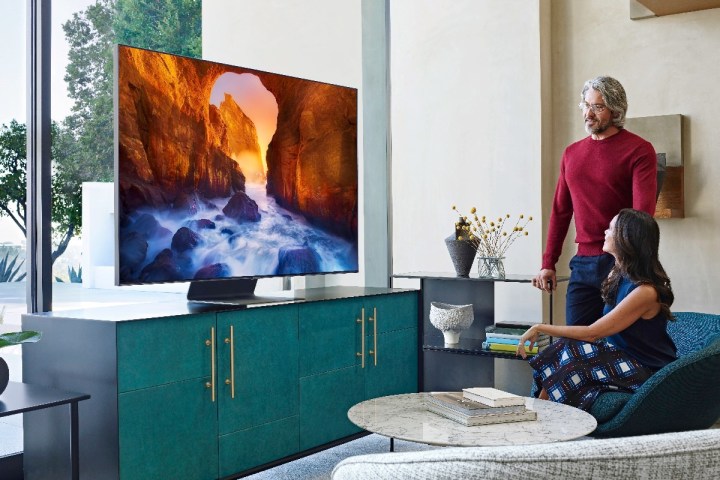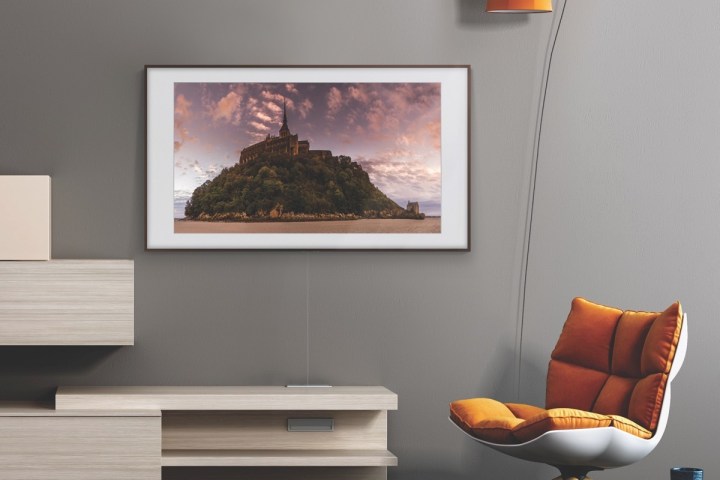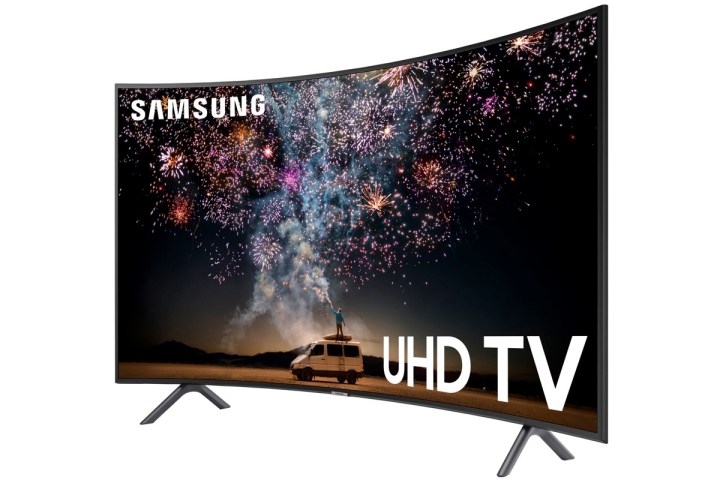We were pretty wowed by Samsung’s slate of new TVs at this year’s CES in Las Vegas. With impressive new features, more sizes, and even better image quality, the only remaining questions were: How much will they cost, and when can we get them? We now have answers to both, along with all of the other details around Samsung’s 2019 TV lineup.
New features
This year, all of Samsung’s Smart TVs will be equipped with Apple’s iTunes Movie and TV show catalog of content — a Samsung exclusive for now — as well as AirPlay 2. The company’s 2018 TVs are also expected to get AirPlay 2. The Universal Guide feature has been updated for better usability and now includes available iTunes content for rent or purchase. Samsung’s Bixby intelligent personal assistant makes its debut on the 2019 TVs, and the company’s One Remote has been given far-field mics to pick up voice commands from anywhere in the room. Google Assistant and Amazon Alexa are both slated to be added to these TVs later in the year.
Gamers will appreciate the changes to Samsung’s Real Game Enhancer option, which now incorporates AMD’s Radeon Freesync variable refresh rate technology, which the company claims will help prevent tearing and stuttering. Game Motion Plus is also present, which removes motion blur and judder.
Samsung’s Ambient Mode will continue to be a feature on all 2019 QLED 4K and 8K TV models. The feature, which lets the TV display art or information in a low-power mode when not in use, offers a greater variety of content in 2019, as well as new ways to display information. The Serif TV gets access to Ambient Mode in 2019 — something it lacked in 2018.
Here’s the full 2019 lineup, with MSRPs and availability.
QLED 8K

If you’re in the market for a Samsung 8K QLED TV, there’s only one model to choose from — . It’s available in a remarkable range of sizes, including:
- ($5,000)
- ($7,000)
- ($10,000)
- ($15,000)
- 98-inch ($69,000)
In addition to the features common to all of the 2019 lineup, the Q900 gets Samsung’s Quantum Processor 8K, which upscales lower-resolution content to 8K while also allowing for playback of native 8K content. The processor also optimizes audio by tailoring the audio settings to the specific layout of the room. This year, as more and more manufacturers catch up with the display capabilities of LG’s OLED panels, the processor used to get information to the screen is arguably the big differentiator. Samsung’s looks to be excellent, though we will test this out as soon as a review model comes our way.
QLED 4K

Samsung’s 2019 QLED 4K models also get the benefits of improved processing with a 4K version of the Quantum Processor. It uses A.I. upscaling to improve the brightness, picture quality and sound optimization for each scene.
The company says that its Q80R and Q9R feature Ultra Viewing Angle technology, which “restructures the TV’s panels so the backlight passes through the panel with lights evenly onto the screen.” It claims this will reduce glare, enhance colors, and improve viewing angles.
The Q70R, Q80R, and Q90R models offer Direct Full Array backlighting with dedicated zones, though Samsung has not revealed how many zones it has used on these TVs.
Q90R
- ($3,500)
- 75-inch ($5,000)
- 82-inch ($6,500)
Q80R
- 55-inch ($2,000)
- ($2,800)
- 75-inch ($4,000)
- 82-inch ($5,300)
Q70R
- ($1,250)
- ($1,500)
- ($2,200)
- ($3,300)
- 82-inch ($4,500)
Q60R
- 43-inch ($800)
- ($1,000)
- ($1,200)
- ($1,800)
- ($3,000)
- 82-inch ($3,800)
QLED Lifestyle 4K TVs

In addition to the new availability of Ambient Mode on the Serif, both of these lifestyle models have been upgraded to QLED display technology.
The Frame:
- 43-inch ($1,300)
- 49-inch ($1,700)
- 55-inch ($2,000)
- 65-inch ($2,800)
The Serif: 55-inch ($1,600)
4K UHD RU Series

RU8000:
- ($800)
- ($1,000)
- ($1,400)
- 75-inch ($2,200)
- 82-inch ($3,200)
RU7300 (Curved):
- 55-inch ($700)
- 65-inch ($1,000)
RU7100:
- 43-inch ($330)
- 49-inch ($400)
- ($500)
- 58-inch ($550)
- ($700)
- 75-inch ($1,200)



